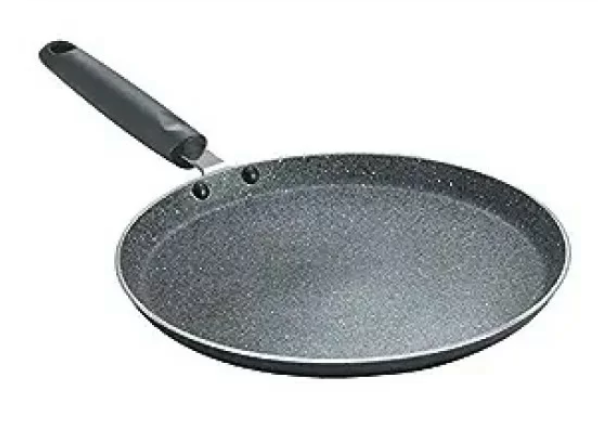A quality kitchen setup isn’t complete without nonstick cookware and a good dosa tawa. These essentials make cooking a pleasure, offering convenience and enhancing the flavor of various dishes. In this guide, we’ll delve into the benefits of nonstick cookware, tips for choosing the best dosa tawa, and maintenance practices that prolong their lifespan.
1. Understanding the Benefits of Nonstick Cookware
Nonstick cookware has revolutionized home cooking by offering a simple, practical solution to several common kitchen challenges. Here are some of its most appreciated benefits:
- Reduced Oil Use: Nonstick surfaces require minimal oil, helping you cook healthier meals with less fat.
- Easy Cleaning: Nonstick cookware is easy to clean, as food doesn’t adhere to its surface. A quick rinse and wipe are often all that’s needed.
- Durability and Versatility: With proper care, nonstick cookware lasts for years and can handle various cooking techniques, from sautéing vegetables to frying eggs.
2. Choosing the Perfect Dosa Tawa
For fans of Indian cuisine, a dosa tawa is indispensable. Designed specifically for dosa preparation, it also doubles as a tool for making pancakes, omelets, and more. When selecting a dosa tawa, here’s what to look for:
- Material and Coating: Cast iron and nonstick are popular choices. Cast iron retains heat well, while nonstick is easier to handle and requires less oil.
- Size and Shape: A good dosa tawa should be wide enough (10-12 inches) to allow the batter to spread evenly. Look for flat surfaces, as they promote uniform heating.
- Handle Quality: Since dosa tawas need to reach high temperatures, a heat-resistant handle is crucial for safe and comfortable use.
3. How to Properly Use and Care for Nonstick Cookware and Dosa Tawa
To extend the life of nonstick cookware and dosa tawas, follow these essential care tips:
- Seasoning: If you’re using a cast iron dosa tawa, it’s important to season it. Apply a thin layer of oil and heat it gently before use, which creates a natural nonstick layer.
- Avoid High Heat: Nonstick cookware and tawas work best on medium to low heat. Excessive heat can damage the coating and affect the quality of food.
- Use the Right Utensils: Always use wooden, silicone, or plastic utensils to avoid scratching the nonstick surface.
- Cleaning Tips: Hand-wash nonstick cookware with mild soap and avoid abrasive sponges. For a dosa tawa, rinse with water and wipe dry after each use. Avoid washing a cast iron dosa tawa with soap, as it can remove its seasoning.
4. Nonstick Cookware and Dosa Tawa Cooking Tips
Unlock the potential of your nonstick cookware and dosa tawa with these cooking tips:
- Perfectly Thin Dosas: Heat the tawa evenly and add a small amount of oil before spreading the batter thinly to achieve a crispy dosa. Practice controlling the spread for consistently thin dosas.
- Uniform Cooking: Preheat nonstick cookware for a minute or two before adding food. This ensures even heat distribution for uniform cooking results.
- Minimal Oil Cooking: Use a silicone brush to add a minimal amount of oil. This not only helps with healthier cooking but also maintains the nonstick coating longer.
You Can Also Visit Us : -
5. StoreA2z’s Quality Selection
At StoreA2z, we understand that high-quality cookware makes all the difference in a kitchen. Our range of nonstick cookware and dosa tawas is designed for home chefs who value durability, functionality, and ease of use. Our products bring simplicity and joy to everyday cooking, offering excellent value and helping you create delicious meals with confidence.
Conclusion
Nonstick cookware and dosa tawa are essential kitchen tools for every cooking enthusiast. With the right products from StoreA2z, you can enjoy hassle-free cooking, healthier meals, and easier cleanup. Elevate your home cooking experience by choosing high-quality, durable cookware that matches your culinary aspirations.





Comments